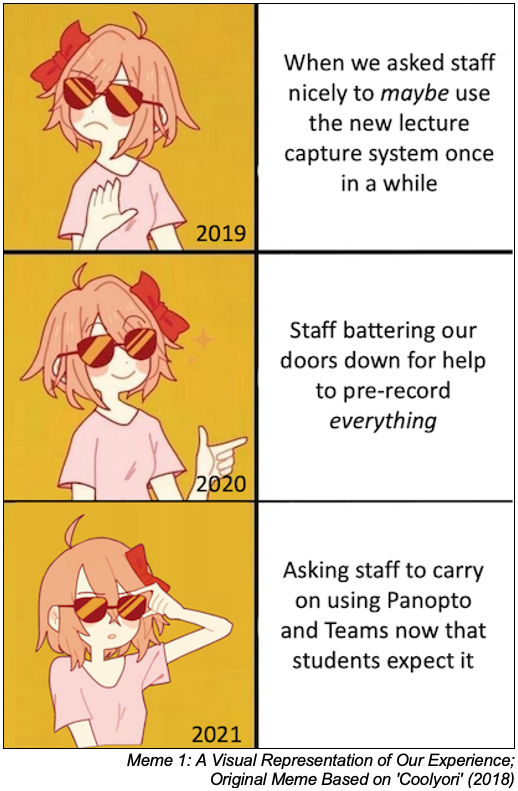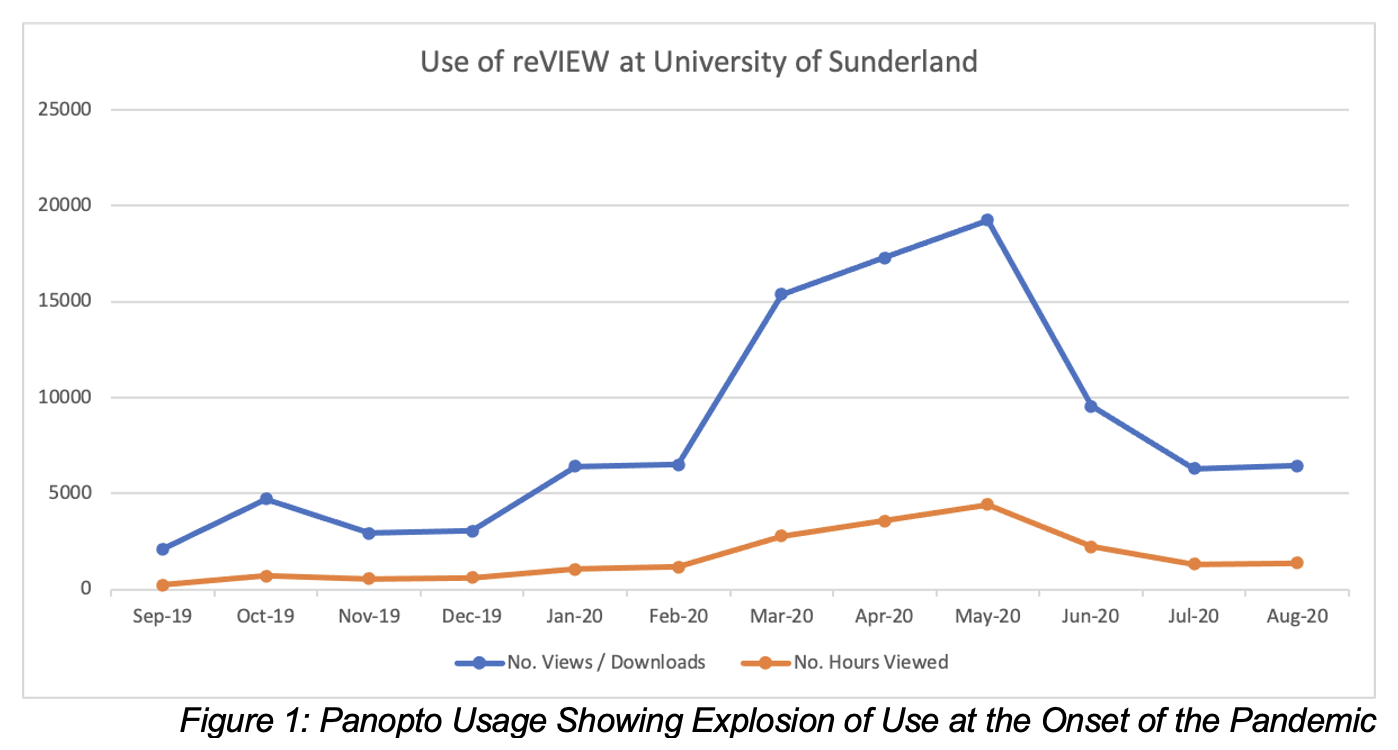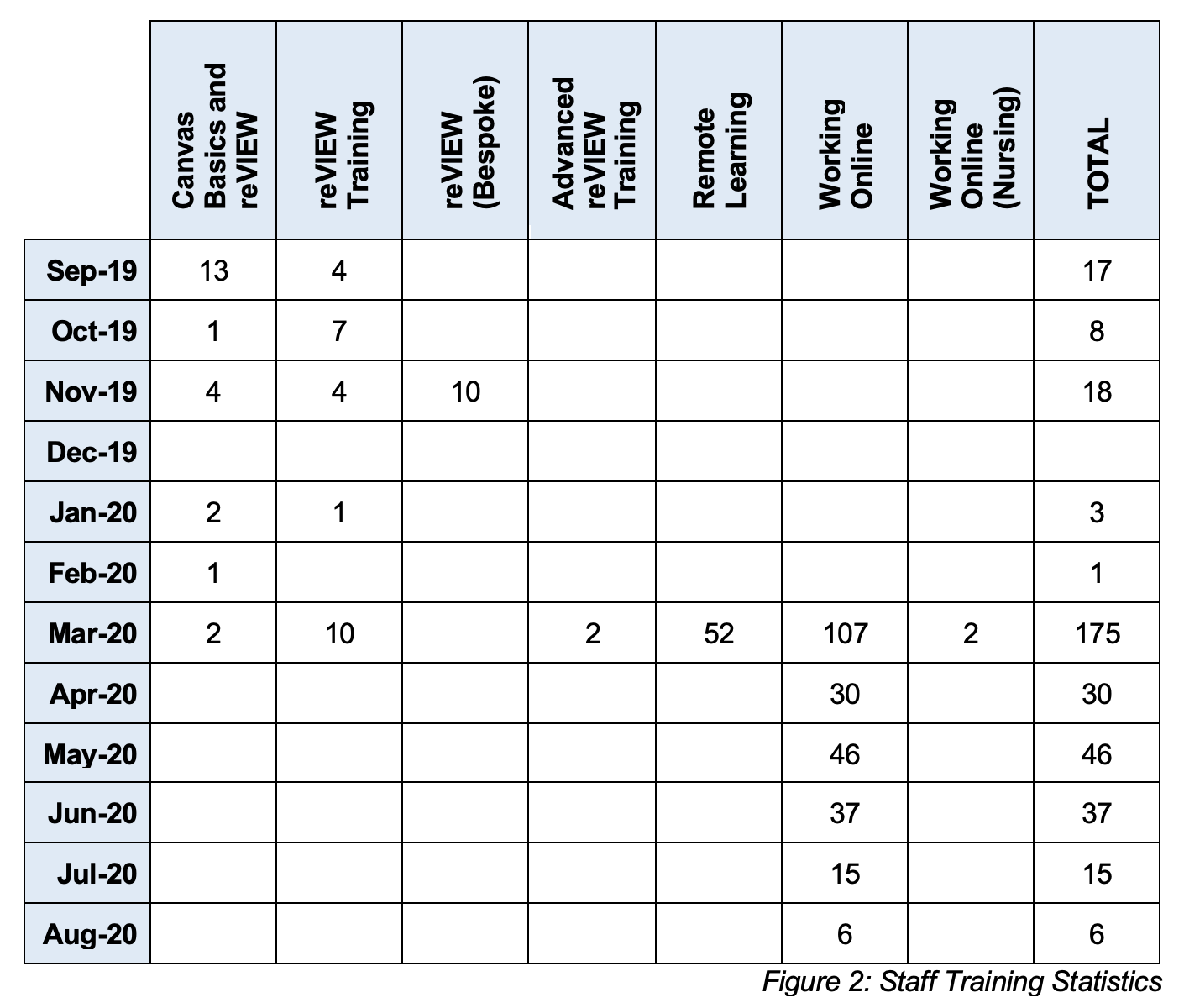How a Pandemic Enabled a Culture Shift Towards Lecture Capture
Sonya McChristie describes how the adoption of new video systems and the interruption caused by the pandemic drove the adoption of Universal Design for Learning (UDL) at the University of Sunderland.
Author: Sonya McChristie

1. What exactly was the shift in culture and / or organisational practice that you wish to highlight?
This case study will discuss how the University of Sunderland has, over the past three years, deployed two new video-based systems – Panopto and Microsoft Teams – to help enable the adoption of Universal Design for Learning (UDL) across the institution, and how the Covid-19 pandemic subverted our carefully laid plans and actually drove cultural change and mass adoption.
With a proud tradition as a civic university at the heart of the city, Sunderland has a strong widening participation agenda and recruits a high number of home students who are more likely than sector averages to be from the local area, older, first-generation students, and to have specific learning needs, declared or otherwise. To assist in meeting the needs of this diverse study body, the University’s Centre for the Enhancement of Learning and Teaching (CELT) has been driving the adoption of the UDL model across our curricula, one strand of which was to implement a lecture capture system. This specific project began in academic year 2018/19, with full deployment as an ‘opt-in’ system from 2019/20. Panopto was chosen, branded as reVIEW internally, and lecture and seminar rooms were outfitted with high quality boundary microphones and cameras. A comprehensive staff development programme was delivered by CELT beginning in the summer of 2019 in preparation for the start of the new academic year.
In a separate project, unrelated to teaching and learning (at this time…!) the University’s IT Services department moved staff user accounts to Office 365 from an internal Exchange server in early 2020, following the successful migration of student accounts the previous year. As part of this migration staff gained access to Microsoft Teams as a new channel for internal communications.
Then in March 2020, the Covid-19 pandemic resulted in the University shutting down all in-person teaching and ‘pivoting’ to online learning. CELT had around a week to prepare for this and immediately launched an ‘Online Working’ development programme to get staff up to speed with Canvas, Panopto and other tools to support them with online teaching.
2. What did ‘working well’ look like?

Usage of Panopto exploded. While the system had been purchased to provide lecture capture, and our staff development had been delivered with this context in mind, it had the facility to pre-record content using a combination of audio, video, PowerPoint and Keynote, and screen capture, and it was this functionality which proved essential to support online teaching. Our ‘Online Working’ programme was the most successful we have ever led, hitting over a third of our academic staff in under a month.

What didn’t work at all well was the existing web conferencing tool in Canvas, BigBlueButton. Suddenly faced with a massive spike in demand, it seemed like the service just couldn’t cope. My own experience of using it for teaching was painful, with frequent lagging and drop-outs. In response, our academic community clamoured to be able to use Teams for teaching, and, in an acknowledgement of the issues with BigBlueButton, the University quickly re-purposed Teams as a teaching tool. We enabled the Canvas LTI to link the two systems and updated our Working Online workshops to include this new approach.
3. How could this practice be spread?
18 months have passed since those crazy – and scary – early days of the pandemic, and with the start of the new academic year, Sunderland adopted a hybrid teaching and working model. Now, with much teaching back in the socially-distanced classroom, the challenge for us has become how to encourage staff to record their in-person lectures and seminars, as well as continuing to provided pre-recorded material for students – a standard of service which is now expected.
A key lesson to be learned from this experience is to think beyond the conventional ‘sold’ purposes of available software; to explore all available uses of the tools at our disposal, and wherever possible to provide those to the end users to enable them to the tools as they need and wish. We may have obtained Panopto for lecture capture, but it was as a pre-recording tool that it proved essential for helping us cope with teaching during the pandemic. Similarly, with regards to Teams, the University deployed this as a tool for internal staff communication – we never anticipated that it would be used for teaching, but it again not only proved critical, but enabled innovative practice from our academic community, such as providing a virtual ‘coffee shop’ for informal staff and student gatherings (Hidson, 2021).
One ongoing challenge we face is in getting staff to add captions to the pre-recorded audio and video content they are producing. Over two years after legislation for public service bodies to make their websites accessible came into force (legislation.gov.uk, 2018), we still face an uphill struggle in getting staff to provide captions or transcripts. Technological solutions such as automated captioning are imperfect, with Panopto themselves estimating accuracy at c.70-75% (2019), and human transcription is either expensive or time-consuming for already under pressure teachers. Nevertheless, accurate captions and / or transcripts are a legal and moral necessity.
While this has been included in our training for many years, focusing on the legal requirements – the ‘stick’ approach – and a gentler method, emphasising that captions are an act of kindness and compassion that helps all students, our experience is that captions remain an exception, rather than the rule. New this year is the implementation of ‘VLE Threshold Standards’, a detailed outline of what is expected of Canvas module content, backed by an auditing process. Time will tell what impact this new approach has.
References
Hidson, E, (2021), IDL Coffee Shop, Available at https://practicehub.info/idl-coffee-shop/ (Accessed: 7 January 2021)
‘MemesAndStuff’ (2018), Coolyori / Sayori Drake Meme, Available at: https://knowyourmeme.com/memes/coolyori-sayori-drake-meme (Accessed: 7 January 2022)
Panopto (2019), Frequently Asked Questions (FAQs) About Video Captioning, Answered, Available at: https://www.panopto.com/blog/frequently-asked-questions-faqs-about-video-captioning-answered/ (Accessed: 7 January 2022)
The Public Sector Bodies (Websites and Mobile Applications) (No. 2) Accessibility Regulations 2018 (2018), Available at: https://www.legislation.gov.uk/uksi/2018/952/contents/made (Accessed: 30 October 2021)
Join the conversation at the Digital Culture Forum

